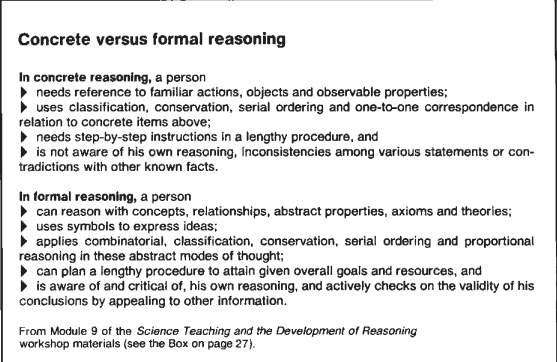When people find out that I teach high school physics or maths, the response is usually, “Oh, I was terrible at that.” There are two levels at which to analyze that statement. On the face, it’s a sort of mutual apology: “I’m sorry I didn’t learn the area of knowledge you care about” followed by my “I’m sorry that physics teachers like me are bad at their jobs.”
At a deeper level, one needs to recognize that most people don’t feel shame at their mathematical shortcomings; instead, they consider failure at mathematics to be an inevitable part of the educational process. In this light, the casual dinner party comment, “Oh, I was terrible at maths,” must be interpreted as “Oh, I was terrible at maths, but my life is alright, therefore maths isn’t important.”
I’ve seen this attitude, in varying shades of forthrightness, from community and business leaders, from education administrators, from fellow teachers and — of course — from parents. I’m sympathetic — it’s a rare day that I calculate an integral or use trigonometry explicitly — but there is a lot of value in learning mathematics (which I outline in this video).
This brings us to the point I’d like to make in this post: in math, physics, and most other subjects, the true goal of education is substantially different from the goals perceived by society. We don’t learn math so we can “solve for x” in a hundred different ways any more than we learn history so we can recount the denouement of the Vietnam War.
Stanford professor Dan Schwartz advocates a new approach to education, and particularly assessment, based not on knowledge or shallow domain-specific skills, but on the choices we make. After all,
It is our choices, Harry, that show what we truly are, far more than our abilities.
– Albus Dumbledore in JK Rowling’s Harry Potter and the Chamber of Secrets
I think Professor Schwartz does his thesis a disservice by identifying choice as the theme, as his programme seems more concerned with a holistic, process-based approach to assessment (which thus informs learning). I’ll try to identify the major salient points of his approach:
- Assessment in the current education system, even at its best, is obsessed with knowledge. However, the end-goals of education are about much, much more than knowledge.
- With new technologies, we have the ability to create activities that produce an “assessment of processes”.
- These new assessments will allow us to (finally?) evaluate the effectiveness of instructional techniques and strategies, which will simplify the identification of best practices.
This should jive pretty well with the emerging trends (a) toward technology-based education systems (MOOCs, animations, etc), and (b) toward data-driven schools and data-mining, more generally.
Back to choice. Professor Schwartz correctly sees that the subplot in all this drama is the question of what the students are actually doing as they learn, and how they’ll take their learning into the world when they leave the classroom. Student autonomy seems to be increasingly important for educating participants in global democracies, in addition to the myriad of educational benefits that are experienced when students feel free to learn in a comfortable fashion.
However, there is a contradiction inherent in this argument: if a student is making poor choices, does the school not have a responsibility to correct those inappropriate actions? For example, if a student is writing with poor technique, one would expect a teacher to insist s/he correct her/his approach. On the other hand, if that same student organizes a Marxist student club, should the school intervene? And to what extent should teachers intervene: is classical or operant conditioning appropriate as a discipline-building strategy in a high school classroom?
